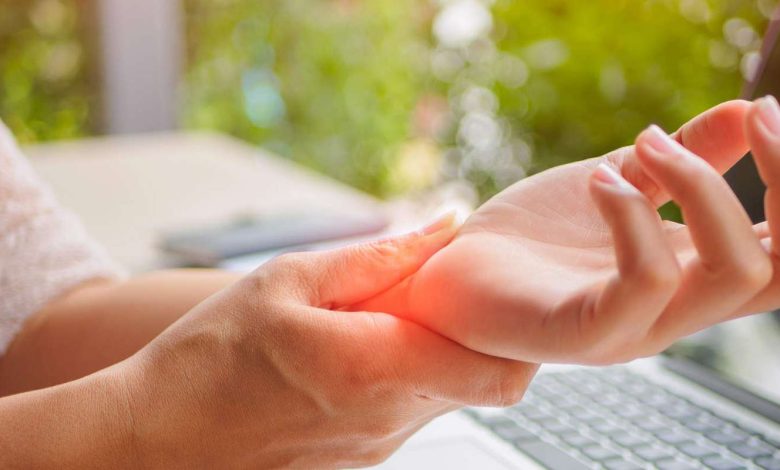Muscle aches, myalgia: What's it, causes, symptoms, diagnostics, treatment, prevention

Muscle aches; Muscle pain; Myalgia; Pain – muscles
Myalgia: What's it?
Myalgia, also known as myalgia, is a common symptom, which can occur for various reasons. Myalgia is characterized by a feeling of discomfort, pain or tension in one or more muscles of the body.
Muscle pain is quite common and can affect more than one muscle.. Muscle pain can also affect ligaments, tendons and fascia. Fascia are soft tissues, connecting muscles, bones and organs.
Causes of muscle pain
Muscle pain can be caused by a number of different factors.:
- Muscle pain is most often associated with tension, muscle strain or injury from exercise or strenuous physical work. Pain, usually, affects specific muscles and starts during or immediately after activity. It's often obvious, what activity causes pain.
- Muscle pain can also be a sign of the condition., affecting your entire body. For Example, some infections (including influenza) and disease, affecting connective tissues throughout the body (eg, lupus), can cause muscle pain.
- One of the common causes of muscle aches and pains is fibromyalgia., state, which causes soreness in the muscles and surrounding soft tissues, sleep problems, fatigue and headaches.
The most common causes of muscle aches and pains are:
- Injury or trauma, including stretching and deformation
- Excessive stress on the muscles, including during sports training
- Tension or stress
Muscle pain can also be caused:
- Some medications, including ACE inhibitors to lower blood pressure, cocaine and statins to lower cholesterol
- Dermatomyositis
- Electrolyte imbalance, eg, too little potassium or calcium
- Fibromyalgia
- Infection, including influenza, Lyme disease, malaria, muscle abscess, polio, Rocky Mountain spotted fever, trichinosis (askaridы)
- Lupus
- Rheumatic polymyalgia
- Polymyositis
- Raʙdomioliz
Muscle pain symptoms
Muscle pain symptoms may vary depending on the cause.:
- Feeling moderate or intense pain in a particular muscle or muscle group.
- Feeling of tension or stiffness in the muscles.
- Pain can be temporary or long lasting, sharp or dull sensation.
- Sometimes accompanied by swelling, redness or bruising in the muscle area.
When to see a doctor
In most cases, muscle pain is temporary and does not require medical attention.. However, you should consult a doctor, if:
- Muscle pain lasts a long time and impairs quality of life.
- Symptoms are accompanied by high fever, chills or other unusual symptoms.
- Pain after injury or unusual physical activity.
- You notice a change in color or swelling in the area of pain.
Questions, which the doctor may ask
When visiting a doctor, you may be asked the following questions:
- How long do you feel muscle pain?
- What is the nature of the pain: acute, stupid, throbbing?
- Is there something, what relieves or aggravates the pain?
- Have you recently had an injury or intense exercise?
- Do you have a medical history, which may be associated with muscle pain?
Diagnosis of muscle pain
Diagnosing muscle pain may include:
- Medical checkup: The doctor will examine and assess the nature of the pain and associated symptoms.
- Medical history analysis: It is important to discuss your medical history and previous injuries or illnesses.
- Laboratory research: In some cases, blood tests or imaging may be needed to identify the cause of the pain..
Treatment of muscle pain
Treatment for muscle pain may include:
- Rest and reduced physical activity: Give your muscles time to recover.
- Application of cold and heat: Cold compresses can reduce inflammation, and heat compresses – relax your muscles.
- Taking anti-inflammatory drugs: Non-steroidal anti-inflammatory drugs may help reduce pain and inflammation.
- Physiotherapy and stretching: A physical therapist can prescribe exercises to strengthen and stretch the muscles.
Treatment and prevention of muscle pain at home
For muscle pain due to overuse or injury, rest the affected body part and take acetaminophen or ibuprofen. Apply ice for the first 24-72 hours after injury, to reduce pain and inflammation. The warmth often feels more soothing afterwards..
Muscle pain from overexertion and fibromyalgia often respond well to massage. Light stretching exercises after a long period of rest are also helpful..
Regular exercise can help restore proper muscle tone.. Walking, cycling and swimming are good aerobic exercises. A physical therapist can teach you stretching, toning and aerobic exercise, to help you feel better and get rid of pain. Start slowly and gradually increase the number of workouts. Avoid vigorous aerobic activity and heavy lifting when injured or in pain.
Be sure to get enough sleep and try to reduce stress. Yoga and meditation are great ways to help you fall asleep and relax.
If home remedies don't work, your healthcare provider may prescribe medication or physical therapy. Maybe, you will have to go to a specialized clinic.
If your muscle pain is caused by a certain medical condition, do that, what your doctor has told you to treat your underlying condition.
Steps, which can help reduce the risk of muscle pain:
- Stretching before and after training.
- Warm up before your workout and cool down after.
- Drink plenty of fluids before, during and after training.
- If you work in the same position most of the day (eg, sit at the computer), do stretching exercises, at least every hour.
Used sources and literature
Best TM, Asplund CA. Exercise physiology. In: Miller MD, Thompson SR. eds. DeLee, The sink, and Miller’s Orthopaedic Sports Medicine. 5th ed. Philadelphia, PA: Elsevier; 2020:chap 6.
Claw DJ. Fibromyalgia, chronic fatigue syndrome, and myofascial pain. In: Goldman L, Schafer AI, eds. Goldman-Cecil Medicine. 26th ed. Philadelphia, PA: Elsevier; 2020:chap 258.
Parekh R. Rhabdomyolysis. In: Walls RM, Hockberger RS, Gausche-Hill M, eds. Rosen’s Emergency Medicine: Concepts and Clinical Practice. 9th ed. Philadelphia, PA: Elsevier; 2018:chap 119.
